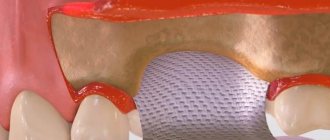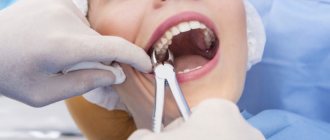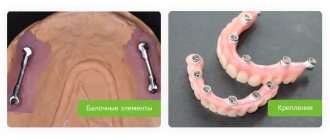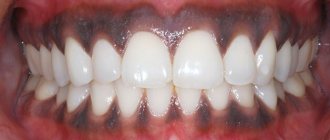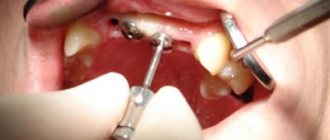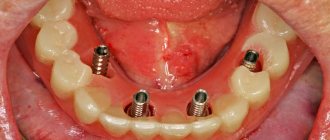Dental restoration solves not only functional problems, replacing lost teeth with artificial ones. Orthopedists attach no less importance to the aesthetic component of prosthetics. Functionality and aesthetics are combined by the use of artificial gums.
Most often, this design is used in the manufacture of removable dentures. The crowns are fixed to the base, creating a complete imitation of the gums and teeth in it. The materials for such products are polymers: acrylic, nylon, AcryFree. The last two are hypoallergenic, but acrylic can cause an allergic reaction. Teeth on artificial gums transfer part of the load to the base, but this distribution is uneven. Adequate distribution is only possible with implant prosthetics.
Functions of artificial gum in implant-supported dentures
In removable dentures, artificial gum is a mandatory element. When the structures are simply fixed on the gums, the artificial gum provides additional fixation because it tightly grips the alveolar ridge.
In the case when the prosthesis is installed on implants, fastening elements are located inside it, just under the gum, on the back side of the dental crowns. Therefore, artificial gum helps to hide them, allowing you to give the dentition a sick aesthetic.
In some cases, doctors insist on adding artificial gum even to permanent dentures . Naturally, this surprises patients. But the gums also play a role, especially with extensive tooth loss or complete edentia. Dental crowns are used to fill the dentition, but artificial gums are used to fill the height of the bite.
This option is applicable for situations where, as a result of a long absence of teeth, your bone tissue has noticeably decreased in volume - the level of the gums, naturally, has fallen. And in order for the dentition to be even, you will have to either build up the bone to the required volume, or choose basal implants that are fixed in the existing bone volume, but then the prosthesis will have a small part of the gum. In addition, if the cause of tooth loss is diseases such as periodontitis or periodontitis, in which the tissues atrophy unevenly, with prosthetics without artificial gums it would be necessary to make crowns that differ significantly in height, which would be completely unsatisfactory from an aesthetic point of view. If bone atrophy is not significant, then the prosthesis is made without artificial gum.
Gum plastic surgery
This is a surgical intervention in which the doctor forms a beautiful gingival margin. Gingivoplasty improves the volume and contour of the gums. Like any operation, gum surgery is accompanied by slight swelling and some pain. Immediately after the intervention, you need to follow the doctor’s recommendations, limit certain foods, and carry out procedures.
During implantation, they work with the gum after the implant has healed, but before installing the crown. In order to form a hole, a gum former is first used, and after 2 weeks a crown is installed.
All together, and even the terrible word “operation”, often scares patients away. Sometimes, plastic surgery cannot be performed due to contraindications. Therefore, another method was proposed.
Classical implantation with bone tissue augmentation
To install implants of a standard classic type, a sufficient amount of bone tissue is required. In this case, you receive a denture without artificial gums, consisting solely of dental crowns. But you will lose in the following:
- the cost of treatment will increase: since the augmentation operation costs some money, besides, classical implantation is almost twice as expensive as the basal method,
- the treatment period will increase: at least three months are needed to restore the bone after augmentation and the same amount more for the complete engraftment of the implants, only after this it will be possible to install a permanent prosthesis
General overview
One of the tasks of prosthetics is to create a structure that does not differ in appearance from natural tissues and tooth enamel. This also applies to the mucous membrane of the area adjacent to the surgical site. Artificial gum performs both aesthetic and supporting functions, allowing the jaw to return an attractive appearance even in situations where the patient has been diagnosed with extensive edentia.
Quite often there are situations when the consequence of poor-quality dental treatment is the development of atrophic processes that affect not only soft tissues, but also the spongy structure in those areas where voids are localized. The use of a prosthetic element of this category is distinguished not only by the loyalty of the method used in terms of the degree of intervention in the body, but also by the minimal time and financial costs that the patient is forced to face.
Expert opinion
Roman Borisovich Alekperov
orthopedic dentist
Experience: 24 years
Although artificial gum helps distribute the load on the jawbone, this distribution is not uniform. This means that over time, atrophic dentures will inevitably develop under the removable denture, the bone will sag, the denture will become uncomfortable, no longer fit, or may even break during chewing. How to prevent the development of bone deficiency? Only with the help of implantation! If you decide to install implants after the tissue has begun to “go away,” take advantage of the possibilities of basal implantation.
At what stage of implantation is gingivoplasty performed?
If in case of bone grafting to replenish the volume of hard tissues, surgery is recommended as a previous stage of implantation, then augmentation of gingival tissues is allowed at different stages. Depending on the causes of gum deficiency, the procedure is performed during one of the stages:
- Before implantation . In case of initial deficiency of attached gum. But if the implant surgeon is skilled in perioplasty, the procedure is also possible during implantation.
- During implant installation . One-stage plastic surgery is indicated for thin gum biotypes, if there is not enough mucous membrane to cover the surgical area.
- During the opening of the implant after osseointegration. This period is often chosen for any indication. At the same stage, correction of errors after implantation is carried out. At the same time, the gum former is installed.
- After operation. It is carried out if the parameters of the mucous membranes were not taken into account in the early stages, and over time the implant neck became exposed. It is recommended to carry out the procedure as soon as possible to reduce the risk of bone recession and prevent rejection of the artificial root.
ROOTT implantation with immediate loading WITHOUT bone tissue augmentation
During ROOTT express implantation, specially designed implants are used, which eliminate the need for bone augmentation. They are fixed in the deepest layer of bone tissue (basal section), which is not subject to atrophy even after several years of missing teeth. As a result, the implants are securely attached and can withstand maximum loads for many decades. But you get a denture with a small piece of artificial gum. But you save in the following:
- the treatment period is reduced: the implants have a solid structure (the tip after installation remains above the gum level) and excellent primary stability, so immediate loading is allowed already 2-3 days after surgery. And due to the usual pressure, bone cells grow as quickly as possible around the installed implant.
- the cost of treatment is reduced: since augmentation surgery is not required, the number of treatment stages is reduced. Due to the reduction in treatment time, the cost is also reduced - when restoring completely lost teeth in two jaws, it is almost two times lower than the classical protocol,
Let us note that today artificial gums are made from modern materials and are matched in shade to the color of natural gums. As a result, the prosthesis is very thin, does not cause discomfort and is completely invisible to others.
Stages
The operation is performed within 30-60 minutes. If collagen membranes are used, the time is reduced to 10-15 minutes .
Preparation
The oral cavity is disinfected. If necessary, the doctor limits the surgical site from the rest of the mucosa.
Anesthesia
Infiltration or conduction anesthesia with nerve block is used. Painkillers and anesthetics approved by an allergist are used.
Plastic
Incisions are made in the gums (if the operation is performed simultaneously with implantation, no incisions are made). Depending on the clinical picture, local tissue is used to form the gum, a flap of the required size is applied, or a matrix is used.
Seams
Application of surgical sutures.
How we restore teeth
OneDent dentistry installs a metal-ceramic crown with a turnkey inlay; the price includes all materials and labor.
- Stage I. The dentist performs antibacterial treatment of the root canals to eliminate the risk of infection. Then the canal is widened to accommodate the tab and one third of it is filled.
- Stage II. To make an inlay, the doctor takes impressions of the tooth and the unfilled part of the root canal, obtaining an exact copy of them.
- Stage III. The casts are sent to the laboratory, where a stump inlay is cast from a metal alloy.
- Stage IV. Next, the patient is invited to try on the inlay. The doctor makes adjustments and firmly fixes the structure in the dental canal using dental cement.
- Stage V. Now you need to manufacture and install a metal-ceramic crown on the inlay. To do this, the doctor once again takes an impression of the area of the dentition with the inlay already installed. Based on this impression, a crown will be made in the laboratory.
- Stage VI. All that remains is to install the crown and check the bite. The denture will be securely attached and only a dentist can remove it.
Advantages of our center for modern dentistry:
Why you should contact Uniklinik Center for Modern Medicine LLC in Moscow:
- Our clinic employs doctors of medical sciences, professors, and dentists who regularly take advanced training courses in Russia and European countries.
- For 15 years we have been providing dental services of very high quality.
- The clinic has a computed tomograph, a cephalostat, a digital modeling system, and a dental microscope.
- We use modern treatment methods - invasive bone surgery, immediate implantation, tooth extraction, periodontal surgery, all types of prosthetics and orthodontic treatment.
Thanks to such a thorough and comprehensive approach to each patient, and coordinated work in a team of highly qualified doctors, for many years we have been obtaining very highly aesthetic and functional work, which our patients enjoy with great joy.
Healing time for gums around the abutment
You have to wear a screw with a wide head from several days to two to four weeks. The timing depends on how the healing and formation of the gingival contour proceeds. The characteristics and speed of these processes are influenced by the patient’s age, individual characteristics of the jaw, and careful adherence to the rules of dental hygiene. If inflammation occurs in the oral cavity, the former has to be worn longer. To reduce deadlines you need:
- follow all dentist recommendations;
- protect the oral cavity from infections;
- refrain from smoking;
- carefully monitor the condition of the tissues in the area of the installed implant.
In most cases, in the absence of complicating factors, after two weeks the dentist changes the forming screw to the abutment and fixes the permanent crown on it.
What is a metal-ceramic crown?
This is an anatomically accurate imitation of the patient’s specific tooth, also made taking into account the individual characteristics of his bite. Externally, it does not differ from a natural tooth. The price of a metal-ceramic crown with an inlay is quite affordable, for example, compared to zirconium crowns.
Metal ceramics are well suited for restoring chewing teeth, since the base of the crown is durable metal. For manufacturing, hypoallergenic alloys are used that do not oxidize under the influence of saliva and do not cause irritation of the mucous membrane. The only contraindication may be individual intolerance to the metal.
In a dental laboratory, the metal base is covered with several layers of ceramic mass, the shade of which is previously selected to match the patient’s teeth. While metal ceramics may not look entirely natural in the smile area, for the chewing area it is an excellent option that is suitable for most people. For the price, the combination of a metal-ceramic crown plus an inlay will also suit OneDent patients.
Operating principle of the shaper
Structurally and externally, this element screwed into the implant has some similarities with an abutment. But their purpose and tasks differ. The latter serves as a transition link between the implant and the crown and performs an important function of support for the future tooth. Therefore, it must be especially reliable in order to withstand full chewing loads. The first is used only to ensure the aesthetic formation of gums during dental implantation. The period of use is short-term - two to three weeks. For this period:
- soft tissue heals after repeated surgery;
- the gum volume is evenly distributed around the former;
- a so-called pink aesthetic is created, that is, the gingival contour takes on a harmonious appearance.
Since the shaper is used for a short time, the requirements for its strength are low.
What is the role of the stump tab?
This is an orthopedic structure that is installed in the treated dental canal. It becomes part of the tooth root and is able to withstand significant chewing load. We use core inlays, which are made in the laboratory according to the individual parameters of each patient’s root canals. Thanks to this meticulous approach, the restored teeth are durable.
Any inlay consists of an internal canal part (it is placed in the tooth root) and an external part - a crown imitating a tooth is attached to it. The design for a single-channel tooth is monolithic, and for a multi-channel tooth it is collapsible.
Making an appointment does not oblige you to anything, you can cancel your appointment at any time
Make an appointment
Indications
In some clinical cases, it is impossible to restore a tooth with a filling. It is also difficult to attach the crown to the remaining dental tissue. Many clinics decide to remove these remains and offer implantation. In our dentistry, we fight to the last to preserve the tooth.
Significant destruction of chewing teeth due to caries or injury is not a reason to completely remove it. Even if only the root remains, it can be used as a basis for installing a core inlay with a metal-ceramic crown. The tab will be a strong link between the root and the crown. This orthopedic design will allow you to completely restore chewing functions and the appearance of the tooth.
Making an appointment does not oblige you to anything, you can cancel your appointment at any time
Make an appointment
An important condition is that the tooth root must be intact, and there must be no inflammation in its tissues. It is also necessary that the walls of the root canals have sufficient strength, and the root itself is of sufficient length.
| The price of a metal-ceramic crown with an inlay is less than the same crown installed on an implant - an artificial tooth root. Therefore, if indicated, our patients can save significant money. |
How to prepare for gingivoplasty?
You can make an appointment at our clinic in Moscow by phone number or using the feedback form on the website. First, you need to come for a consultation with a dentist, who will assess the amount of work, offer a treatment option and preliminarily determine the price for gum surgery when the tooth root is exposed, for example. Or he will tell you everything that is necessary to solve your clinical situation.
Before the operation, perform:
- treatment of carious cavities;
- elimination of acute inflammatory processes.
After gingivoplasty (local or generalized), you will have a healthy, beautiful and naturally radiant smile.
The stitches are removed after 10-12 days.
After gum surgery

